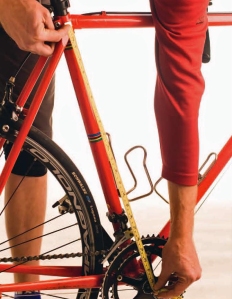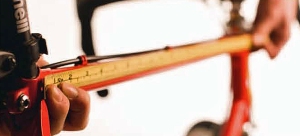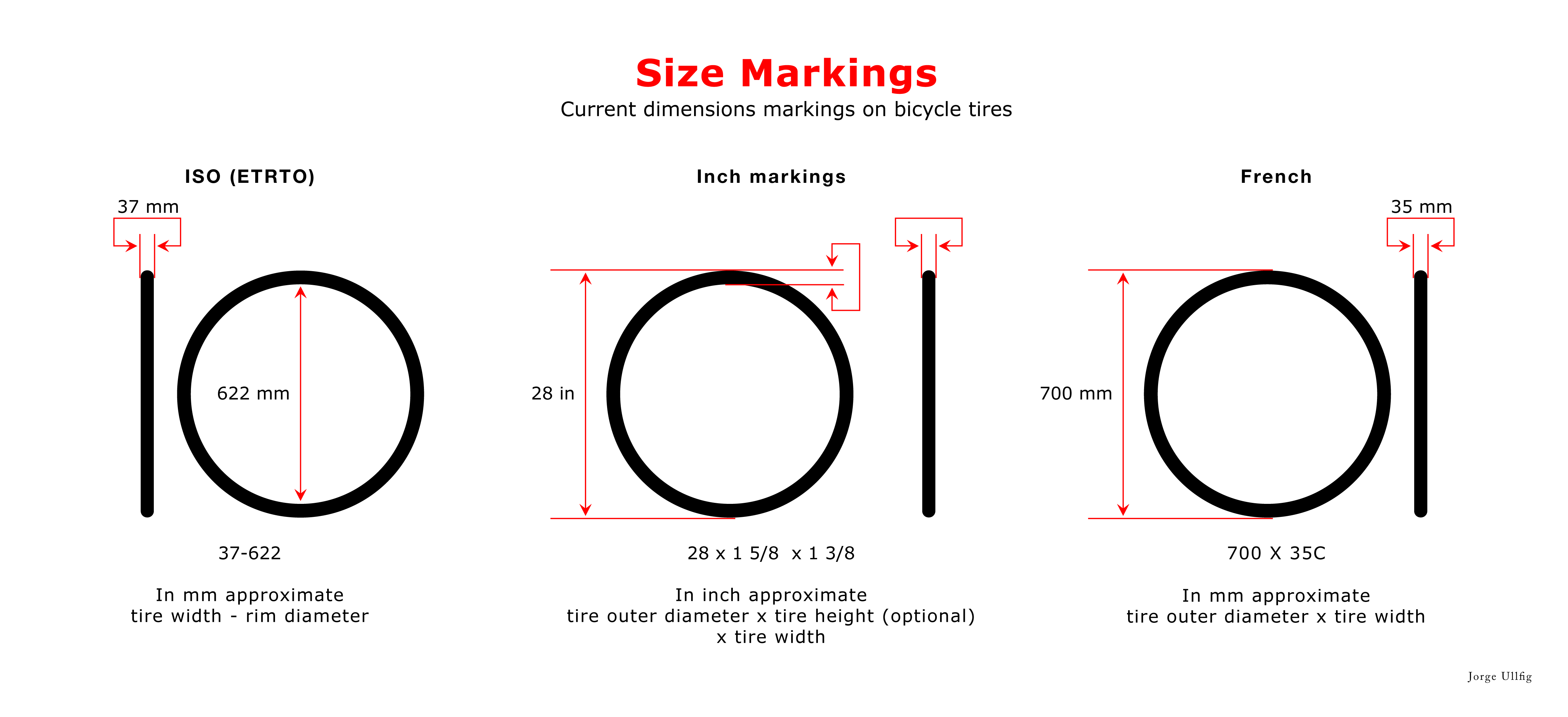When it comes to sizes, bikes seem to have their own mysterious rules. Jon Miller unravels the complications of sizing up a bike.

Photo: On Track Images
In the frame
It used to be simple. Traditionally, with limited choice, complicated measurements were never a problem when sizing a bike; you’d just stand astride the top tube, and if three fingers fitted snugly between your crotch and the top tube, then it was a fit.
Things have changed, and choices in every conceivable bike dimension are enormous, but there are still some basic measurements you can use as a guide when shopping for a bike.
You’ll normally see road-bike sizes given in centimetres; for example, a 59 centimetre bike. This usually refers to the distance between the centre of the bottom bracket to the top of the top tube, where it meets the seat tube. In cases where the top tube isn’t horizontal, such as ladies’ bikes with step-through frames, or compact frames with sloping top tubes, it’s a little harder. In this case, the same measurement is taken from an imagined horizontal top tube.
There can be slight variations, however. Some manufacturers measure to the centre of the top tube, and not its top, and some bikes can have bottom brackets of varying heights. This means it’s possible to have two bikes with the same numerical size measurement but different stand-over heights.
So what size would suit you using this method? Your height can give a general indication, but generally, it is the length of your legs that is more relevant, so an inseam measurement is called for.
Seamly behaviour
To measure your inseam, stand in bare feet with a thickish book between your legs, with the spine hard up against your sit bones (the book is meant to help simulate a saddle). Have someone measure a straight line from the middle of your legs to the top of the spine of the book. Ta da.
As a rough guide, your ideal bike size will be 67% of this figure (ie, multiply it by 0.67).
If this seems too hard, you can use your height as a guide. Roughly, at 152cm (5’) you’ll be looking at a 48cm bike, at 157cm (5’ 2”) a 50cm bike, at 163cm (5’ 4”) a 52cm bike, at 168cm (5’6”) a 54cm bike, at 173cm (5’ 8”) a 55cm bike, at 178cm (5’ 10”) a 57cm bike, at 183cm (6’) a 59cm bike, and at 188cm (6’ 2”) a 60cm bike.

Photo: On Track Images
Top that
Arguably, the length of the top tube is a more meaningful way to measure a bike than the length of the seat tube, and some manufacturers will offer a variety of lengths to suit. That’s because it’s a lot easier to adjust the height of the saddle to give the right leg reach than it is to adjust the reach of a bike.
Mountain mix-up
To complicate the situation further, mountain bikes are sized in inches. Once again, the length of the seat tube is the norm, but it is about 10cm shorter than on road bikes. So as a quick guide, if your ideal road bike is 59cm, subtract 10cm to get 49cm, then convert to inches: 19 inches.
Using that formula, at 152cm (5’) you’ll be looking at a 15 inch bike, at 157cm (5’ 2”) a 16 inch bike, at 163cm (5’ 4”) a 17 inch bike, at 168cm (5’6”) a 17 inch bike, at 173cm (5’ 8”) an 18 inch bike, at 178cm (5’ 10”) a 19 inch bike, at 183cm (6’) a 19 inch bike, and at 188cm (6’ 2”) a 20 inch bike.
A 26 inch mountain bike and a 29 inch mountain bike refers to their wheel size, not their frame size.
Child’s play
Of course, children’s bikes are measured in a different way again. In this case, only the wheel diameter is used, and once again the sizes are in inches. So a 12 inch children’s bike has wheels 12 inches wide. As a very rough guide, two and three-year-olds will fit a 12 inch bike, four, five and six-year-olds will fit a 16 inch bike, seven, eight and nine-year-olds will fit a 20 or 24 inch bike, and older children will fit a 24 or 26 inch bike. After that, adult sizes will be more appropriate.
Wheel muddle
Traditionally, wheels are sized supposing a tyre is attached. The two main sizes you are likely to come across are 26 or 29 inches for mountain bikes, and 700mm (700c) for touring, road and hybrid bikes.
A more consistent measure of a wheel is its inner diameter, the measurement taken from where the bead of the tyre will sit inside the rim (the bead seat diameter). A traditional 700c wheel, by this measure, is a 622mm wheel.
A wheel also has a width, measured as the gap between the two ‘hooks’ inside the rim that will hold the tyre bead. So a wheel/rim might be sized as 622 x 15, meaning its inner diameter is 622mm and its inner width is 15mm.

Above are dimensions you may find on your bicycle tyre and what they mean. Note that the International Organisation for Standardisation had adopted inner-diameter measurements, as they are most reliable.
Tyred out
Tyres are sized according to the diameter of the wheel they are meant to fit, along with a width measurement (the width at the middle of the inflated tyre, not at the rim).
So you might have a tyre marked at 700x23C (700mm outer diameter, 23mm wide) for a road bike, or 26 x 1.5” (26 inches outer diameter and 1.5 inches wide) for a mountain bike.
As wheels can be measured in two ways, so can tyres; an outer diameter, or an inner (and more accurate) bead to bead diameter. A traditional 700c tyre has an inner diameter of 622mm, a 26-inch mountain bike tyre is 559mm, and a 29-inch mountain bike also has a 622mm diameter.
So on a tyre wall you will also find bead measurements; for example, 23-622, meaning the tyre’s inflated width is 23mm, and its internal diameter is 622mm.
The same diameter of tyre will be sold in a variety of widths, and many of those widths will comfortably fit the rim of your wheel. Be careful, however, as a wide tyre may not fit your brake, or knock against your frame.
Generally, road bikes will have tyre widths of 20mm, 23mm or 25mm. For touring and hybrids, 28mm, 32mm, 35mm and even wider are common. Mountain bikes generally have tyre widths in the range of 1.5 to 2.5 inches.
An old bike may have 27 inch wheels, and an inner diameter of 630mm. These are very close in size to 700c wheels, but the two aren’t compatible. While 27 inch wheels are no longer made, spare tyres and tubes can still be found.
Tube Sizes
Bicycle tubes are sized in the same way as tyres, but as they stretch a little and there is some leeway in their sizing, the width is quoted as a range. There’s also a bit of leeway in the diameter, and if you have an old bike with 27 inch wheels, a 700c tube will fit if that’s the only size available.
Nothing to C
Tyre widths used to be designated by a letter, with an ‘A’ for narrow tyres, and up to a ‘D’ for wide ones. That’s a thing of the past, but ‘C’ has oddly lingered on despite being used with various tyre widths.
Rim widths are another matter. A ‘C’ used here stands for a ‘crotchet-type’ rim. That means the rim most bikes have; the sort that hooks the tyre bead into the rim. ‘HB’ means ‘hooked bead’, and is the same as a ‘C’. ‘SS’ stands for ‘straight side’, and is a rim which doesn’t have hooks.
Ride On content is editorially independent, but is supported financially by members of Bicycle Network. If you enjoy our articles and want to support the future publication of high-quality content, please consider helping out by becoming a member.


hello can you help, I am a little confused.Having problems setting my VDO cyclometer.
I have a road bike & on the tyre wall
23-622 & 700-23c, therefore do I set my cyclometer to 28 x 1.38″ or 26 x 1.38″.
Thanks for your help.
Mark